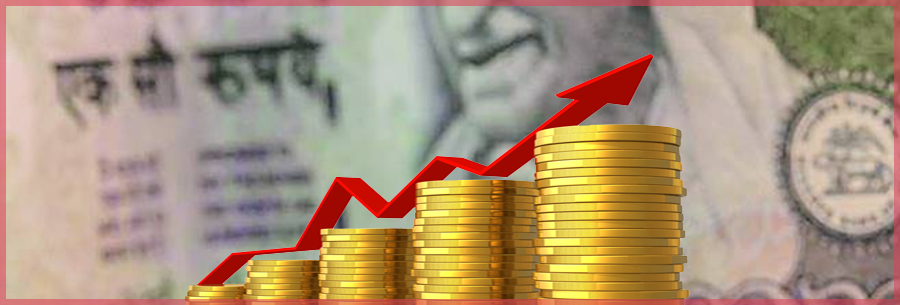Weak macros may affect India’s GDP numbers

The recent release of macro numbers could be worrisome for achieving economic growth targets for the next three quarters of FY19. A slew of macro results were released by the government during July 2018 reflecting a slowdown in the economic indicators.
To begin with, India’s industrial activity recorded a slowdown in May 2018. The Index of Industrial Production (IIP) for the month of May 2018 slipped to 3.2 percent from a revised 4.8 percent in April 2018. The growth in the industrial output declined to a seven-month low.
The IIP had reported expansion of 2.9 percent in May 2017. The sluggish growth in the factory output was mainly due to poor performance in manufacturing, power and fast-moving consumer goods.
The IIP for manufacturing sector fell from 4.5 percent in April 2018 to a mere 2.8 percent in May 2018. The Indices of Industrial Production for the sector stood at 129.1. Of the 23 industry groups in the manufacturing sector 13 recorded a positive growth during May 2018. A downward trend was also seen in the Electricity sector. The sector eased to 4.2 percent in May 2018 from 5.4 percent in April 2018. However, a positive trend was seen in Mining activity which rose 5.7 percent compared with a 5.4 percent growth in April.
Meanwhile, a sharp rise was seen in the Wholesale Price Index (WPI) inflation. The WPI soared to the highest level in over four-and-a-half years. The WPI for the month of June 2018 scaled up to 5.77 percent Y-o-Y. The rise in WPI was mainly driven by higher fuel prices and a depreciating rupee.
Primary articles, which accounts for 22.62 percent weightage of the WPI, witnessed a rise to 5.3 percent in June 2018 from 3.16 percent in May 2018 on the back of higher prices of cereals, wheat, vegetables, potatoes, non-food articles, fibers and minerals.
The vegetable prices saw a jump from 2.51 percent in May to 8.12 percent in June 2018; while prices of fruits fell from 15.40 percent in May to 3.87 in June 2018.
However, fuel and power inflation, which has a weightage of 13.15 percent in WPI, rose to 16.18 percent in June 2018 from 11.22 percent in May 2018. A sharp increase was seen in petrol and diesel prices which grew from 13.90 percent and 17.34 percent in May 2018 to 17.45 percent and 21.63 percent in June 2018.
The Consumer Price Index (CPI) inflation also remained higher at five percent for the month of June 2018 from 4.87 percent recorded in May 2018. The retail inflation inched up due to increase in prices of fruits (10.13 percent), vegetables (7.80 percent), eggs (5.85 percent) and milk products (3.04 percent).
The inflation for the Consumer Food Price Index was registered at 2.91 percent in June 2018. The inflation rate for housing was recorded at 8.45 percent while that for fuel and light was registered at 7.14 in June 2018.
India’s widening trade deficit was another major event, which raised concern for achieving economic growth. The trade deficit recorded for the month of June 2018 was the highest since November 2014. Though merchandise exports rose 17.57 percent Y-o-Y in June 2018, the trade deficit widened to USD 16.6 billion from USD 14.62 billion in May 2018.
The oil imports during June 2018 were 56.61 percent higher valued at 12.73 billion from USD 8.13 billion in June 2017. The oil import bill rose sharply due to increase in the global Brent price by 60.47 percent in June 2018 as compared to June 2017. Depreciating rupee was also one of the reasons for widening of the trade deficit. The imports during May 2018 were valued at USD 10.21 billion.
Given these trends, analysts expect that the Reserve Bank of India (RBI) may hike the repo rate at its August 2018 monetary policy review. It is expected that the repo rates will be hiked by 0.25 percent to 6.5 percent from 6.25 percent at its monetary policy review to be held in August 2018.
The recent minimum support prices (MSP) hike for food grains procurement and also the hike in wages is expected to benefit farmers significantly. However, it will further trigger inflationary pressure, thus posing a serious challenge to achieve economic growth rate of 7.4 percent in FY19.